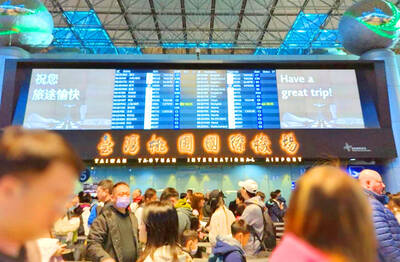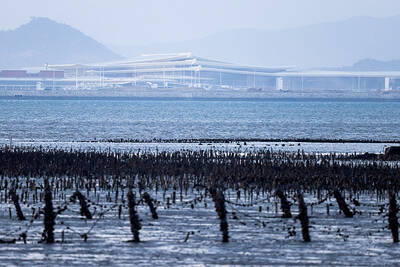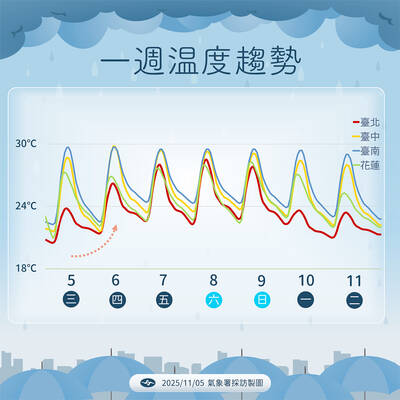Aboriginal lawmakers yesterday called for the redrawing of Aboriginal electoral districts to better reflect regional differences and ethnic diversity.
“Aboriginal voters elect three mountains Aboriginal lawmakers and three plains Aboriginal lawmakers, who represent all Aborigines across the country,” said People First Party Legislator Lin Cheng-er (林正二) of the Amis tribe, during an Internal Administration Committee meeting yesterday morning.
Under the system, six Aboriginal legislators represent all 500,000 Aborigines nationwide.
“So, when we run for legislative seats, it’s like running for the presidency, because our electoral district covers the entire country,” Lin said.
Such a large “electoral district” makes it difficult not only for candidates to campaign, but also to serve their constituents once elected.
“Maybe the Aboriginal electoral district could be cut into half, with one northern district and one southern district, both covering about nine to 11 counties and cities,” he said.
Lin said that among the three plains Aboriginal seats, one should be reserved for a non-Amis representative, since the Amis is the most populous plains Aboriginal tribe, and usually occupy all plains Aboriginal seats in the legislature.
“With more than 180,000 people — or two-thirds of all plains Aborigines — it’s often we Amis who occupy plains Aboriginal seats,” he said. “It’s not very fair to non-Amis tribes.”
In the legislative election in January, “all 10 plains Aboriginal candidates were Amis, because politicians from other plains Aboriginal tribes knew they would not get elected and thus gave up running,” he said.
Under the current electoral system, Aboriginal voters are divided into “mountains Aborigines” and “plains Aborigines,” and each category elects three representatives.
Although the term “mountains Aborigines” refers mainly to Aboriginal tribes living in the mountains, while “plains Aborigines” refers mainly to tribes living on the plains, the description is not entirely accurate, since the definition was based more on some complicated historical reasons.
Mountains Aboriginal tribes include the Atayal, Sediq, Truku, Bunun, Tsou, Paiwan, Rukai and Saisiyat in Miaoli County’s Nanjhuang Township (南庄) — also known as “southern Saisiyat” — and Tao, who live on Lanyu (蘭嶼), or Orchid Island, in the Pacific.
Plains Aboriginal tribes include the Amis, Sakizaya, Kavalan, Thao, Puyuma and Saisiyat in Hsinchu County’s Wufeng Township (五峰), also known as “northern Saisiyat.”
Chinese Nationalist Party (KMT) Legislator Chien Tung-ming (簡東明) of the Paiwan tribe agreed on the need to redraw Aboriginal electoral districts, but said dividing Aboriginal electoral districts into three — northern, central and southern — was more appropriate.
Deputy Minister of the Interior Chien Tai-lang (簡太郎) and Central Election Commission Vice Chairman Liu I-chou (劉義周) both said that they would consider the suggestions.

Three Taiwanese airlines have prohibited passengers from packing Bluetooth earbuds and their charger cases in checked luggage. EVA Air and Uni Air said that Bluetooth earbuds and charger cases are categorized as portable electronic devices, which should be switched off if they are placed in checked luggage based on international aviation safety regulations. They must not be in standby or sleep mode. However, as charging would continue when earbuds are placed in the charger cases, which would contravene international aviation regulations, their cases must be carried as hand luggage, they said. Tigerair Taiwan said that earbud charger cases are equipped

Foreign travelers entering Taiwan on a short layover via Taiwan Taoyuan International Airport are receiving NT$600 gift vouchers from yesterday, the Tourism Administration said, adding that it hopes the incentive would boost tourism consumption at the airport. The program, which allows travelers holding non-Taiwan passports who enter the country during a layover of up to 24 hours to claim a voucher, aims to promote attractions at the airport, the agency said in a statement on Friday. To participate, travelers must sign up on the campaign Web site, the agency said. They can then present their passport and boarding pass for their connecting international

UNILATERAL MOVES: Officials have raised concerns that Beijing could try to exert economic control over Kinmen in a key development plan next year The Civil Aviation Administration (CAA) yesterday said that China has so far failed to provide any information about a new airport expected to open next year that is less than 10km from a Taiwanese airport, raising flight safety concerns. Xiamen Xiangan International Airport is only about 3km at its closest point from the islands in Kinmen County — the scene of on-off fighting during the Cold War — and construction work can be seen and heard clearly from the Taiwan side. In a written statement sent to Reuters, the CAA said that airports close to each other need detailed advanced

UNKNOWN TRAJECTORY: The storm could move in four possible directions, with the fourth option considered the most threatening to Taiwan, meteorologist Lin De-en said A soon-to-be-formed tropical storm east of the Philippines could begin affecting Taiwan on Wednesday next week, the Central Weather Administration (CWA) said yesterday. The storm, to be named Fung-wong (鳳凰), is forecast to approach Taiwan on Tuesday next week and could begin affecting the weather in Taiwan on Wednesday, CWA forecaster Huang En-hung (黃恩鴻) said, adding that its impact might be amplified by the combined effect with the northeast monsoon. As of 2pm yesterday, the system’s center was 2,800km southeast of Oluanbi (鵝鑾鼻). It was moving northwest at 18kph. Meteorologist Lin De-en (林得恩) on Facebook yesterday wrote that the would-be storm is surrounded by